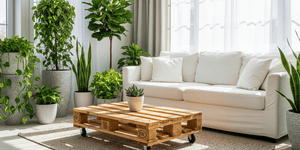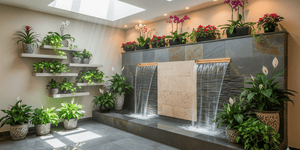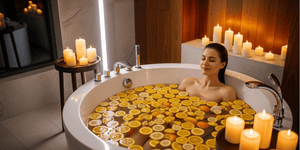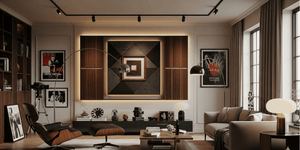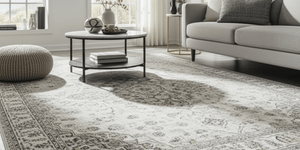No Garden Area? No Problem! Indoor Garden Space Ideas

No garden area outside? No problem! Don't allow the size of your house, apartment or condominium limit you from starting a garden. You can start one inside your home and enjoy air purification, stress reduction, and a better-looking house.
There are plenty of plants that thrive well in an indoor garden. Be it herbs, fruits, or vegetables, you can grow what you want, provided you have a well-dedicated garden space.
Here is a guide to get you started with an indoor garden.
What Is an Indoor Garden?
Let's understand an indoor garden before moving on to the tips.
An indoor garden is an innovative and productive way of growing plants in an indoor setting. It is a good option for people who don't have enough space outside to grow the plants. An indoor garden is also an excellent idea for people who spend much time indoors and would like to spice up the house with plants.
The common types of indoor garden designs include:
- Hydroponic gardens - a great option if you don't want to use soil or don't have time to manage weeds.
- Living walls - they are used in situations where you don't have adequate space on the floor. You can decide to grow the plants by hanging them vertically on your walls.
- Window herb indoor design - this design works best in the kitchen, whereby you place the plant pots on the sink or hang them on the kitchen wall.
How to Create the Perfect Indoor Garden Space
Follow these six tips to create and maintain an indoor garden space in your home.
- Identify the Right Place for the Indoor Garden
The first step is to find a dedicated area for the indoor plants. Which part of your house would you like to have indoor plants? If you need a large garden, you might need to utilize an unused room in the house.
If there is no vacant room, you can create a small section for the garden setup. Your balcony can also be great.
Here are a few things to keep in mind when choosing the right place or the indoor garden:
- Avoid wood or carpet flooring because it can easily get damaged when watering the plants.
- Avoid dark areas such as the attic or the garage.
- Natural light is the best, but you can still utilize fluorescent lights at varying heights.
- Check ventilation to ensure the area has a good flow of air. You might add a floor or ceiling fan to improve the air floor.
- Ensure the place is humid
- Ensure the area is easy to navigate even at night. Be sure to move all obstacles which might prevent you from accessing the garden.
- Choose the Right Plants for Indoor Gardening
Like the outside garden, there is a broad range of plants to grow indoors, including decorative greens, herbs, flowers, berries, and vegetables.
Which plants would you like to grow in your indoor garden?
Plants have different care needs. Some need close monitoring, while others should be left alone to grow. Also, some plants such as palms and philodendron require low light, while others like gardenias require much light, so you might need to invest in a spectrum.
Choose the plants based on their care and maintenance needs.
- Choose the Right Containers
You will be growing your plants in an indoor environment, so you have many options for the containers to use. You can use pots, old vases, plastic bottles, or any modern vessel which fits your needs and budget.
Consider the following factors when choosing the proper containers for your indoor plants:
- Plant spacing - plants with closer spacing can be planted several in the same container
- Root depth - plants with long roots need a grow bag or a large bucket to sustain the roots
- Container material - the primary materials are wood, plastic, metal, ceramic, and fabric
- The diameter of the container
Your plant containers should have both functional and aesthetic benefits. Therefore, you should be choosy in getting the ideal container, especially if the indoor garden is near your living room.
- Use the Best Soil
Soil has a significant impact on the health and the taste of your indoor vegetables or fruits. For this reason, it's essential to choose the best soil. It's worth noting that different types of plants need different soil types. This means that you may require more than one type of soil if your indoor garden consists of more than one type of plants.
You might also need to do a PH test for the soil before planting. The idea is to ensure you use each plant's correct type of soil. This way, you can be confident your plants will thrive well.
- Ensure there's Adequate Sunlight
Plants need sunlight to grow well. Unfortunately, your indoor plants may not always have access to good natural sunlight when it's cloudy or raining. To ensure your plants get enough sunlight, it's highly recommended to use grow lights.
There are many types of grow lights in the market, and you can easily find the best for your needs and budget.
- Take Good Care of Your Indoor Plants
After observing all the above tips and planting them, it is important to take good care of them. After all, the last thing you would want is to find your indoor plants dead after putting so much effort into them.
How do you care for indoor plants?
First, ensure the plants get enough water. The soil should be moist, but you should not water if the soil is already moist. Otherwise, you will damage them.
Observe these other tips to offer valuable care to your indoor plants:
- Fertilize the plants periodically
- Remove dust from the plants
- Depending on the plant, pruning might be used
- Remove the overgrown indoor plants
- Ensure there is adequate drainage in the pots - should have holes at the bottom and add trays if the pots don’t have them built in.
- Use organic insecticides when necessary
There you go! Follow the above tips to create a functional indoor garden for your space.
At Urban Ambiance we have many lighting categories including: outdoor, bathroom, chandeliers, pendants, ceiling, and wall scones. If you are ready to change your light fixtures, check out our collections, and please Contact Us for more information.
